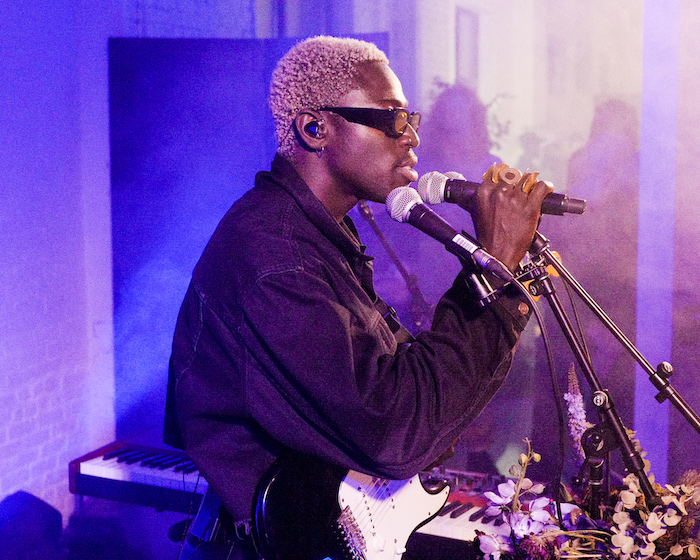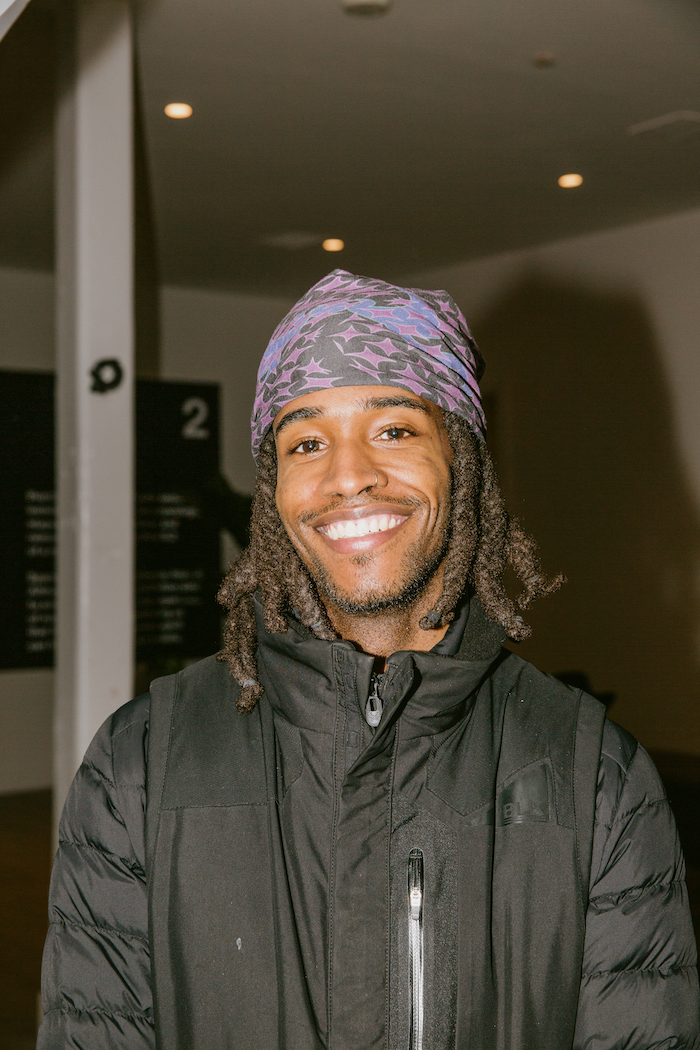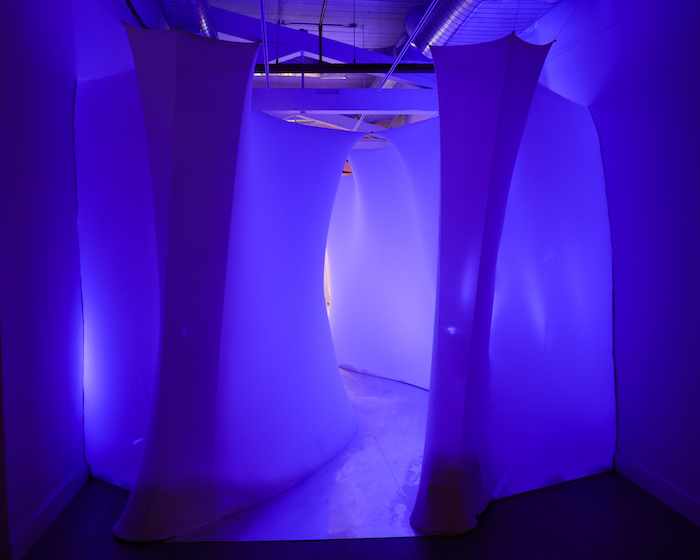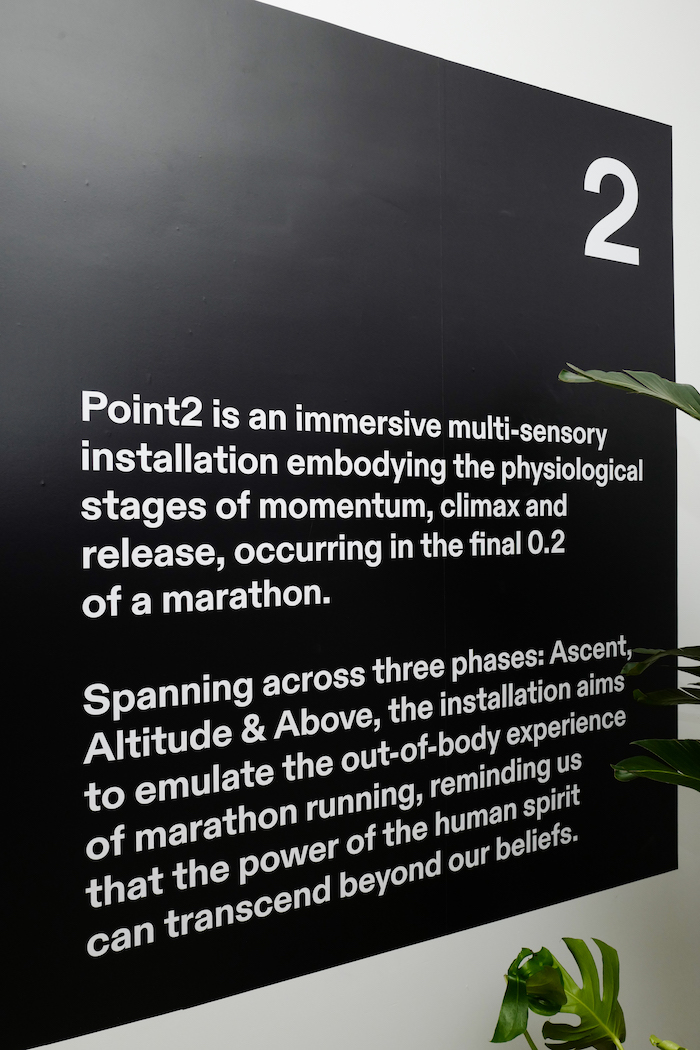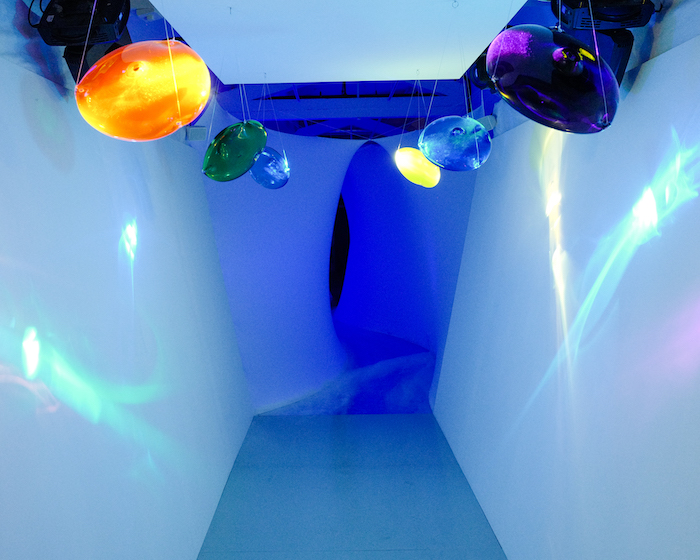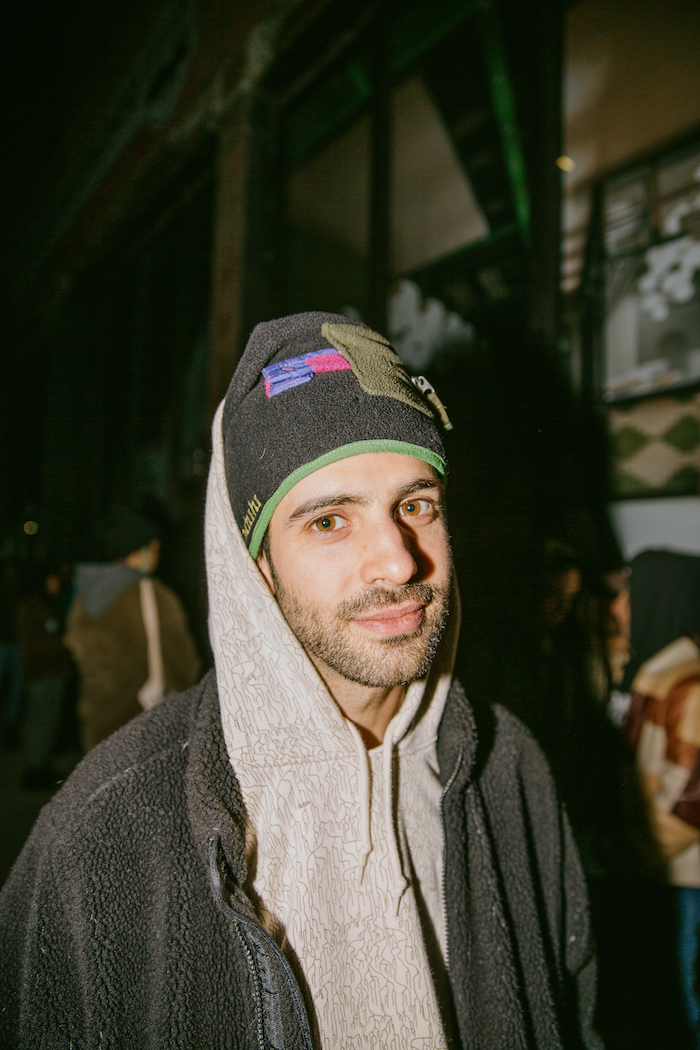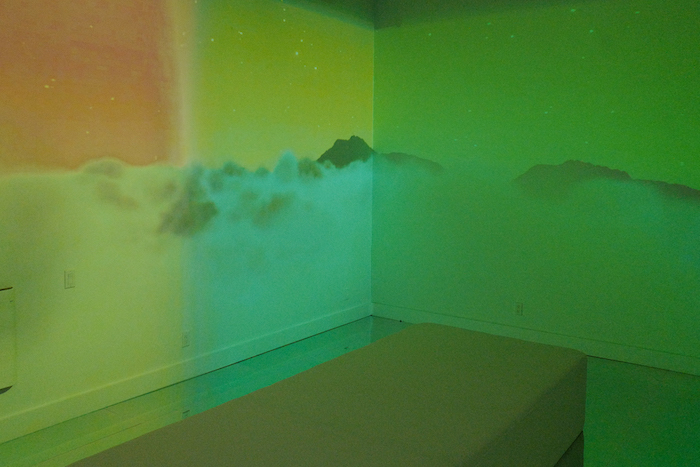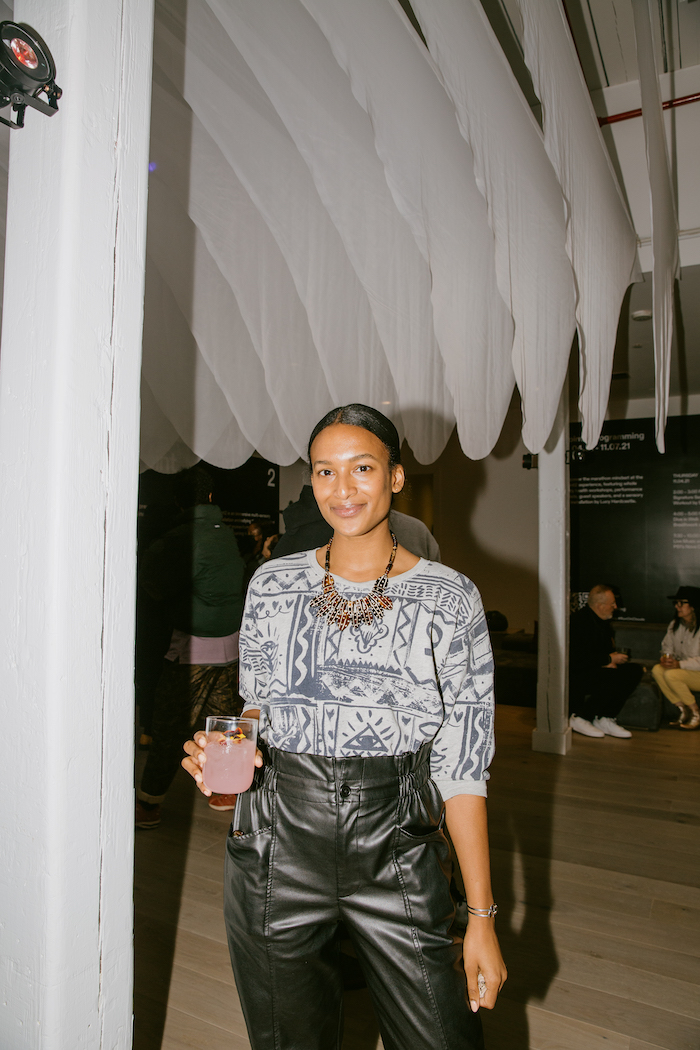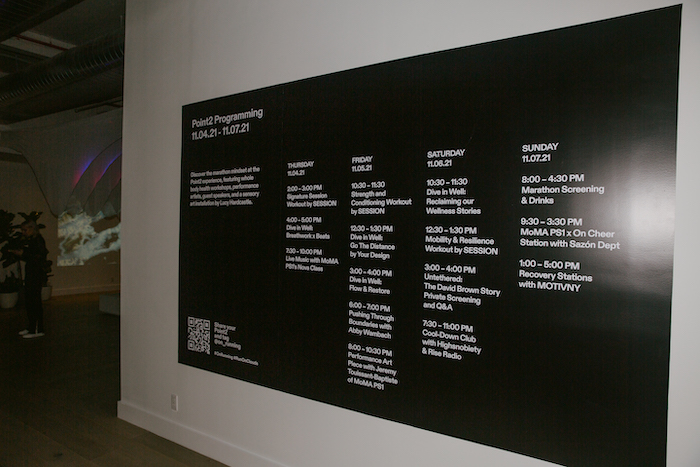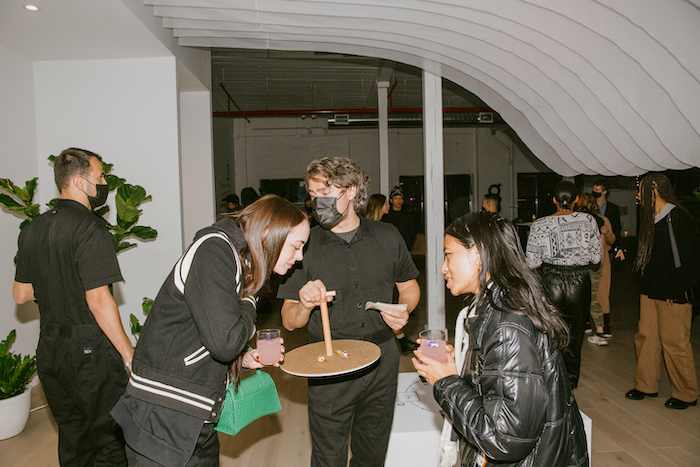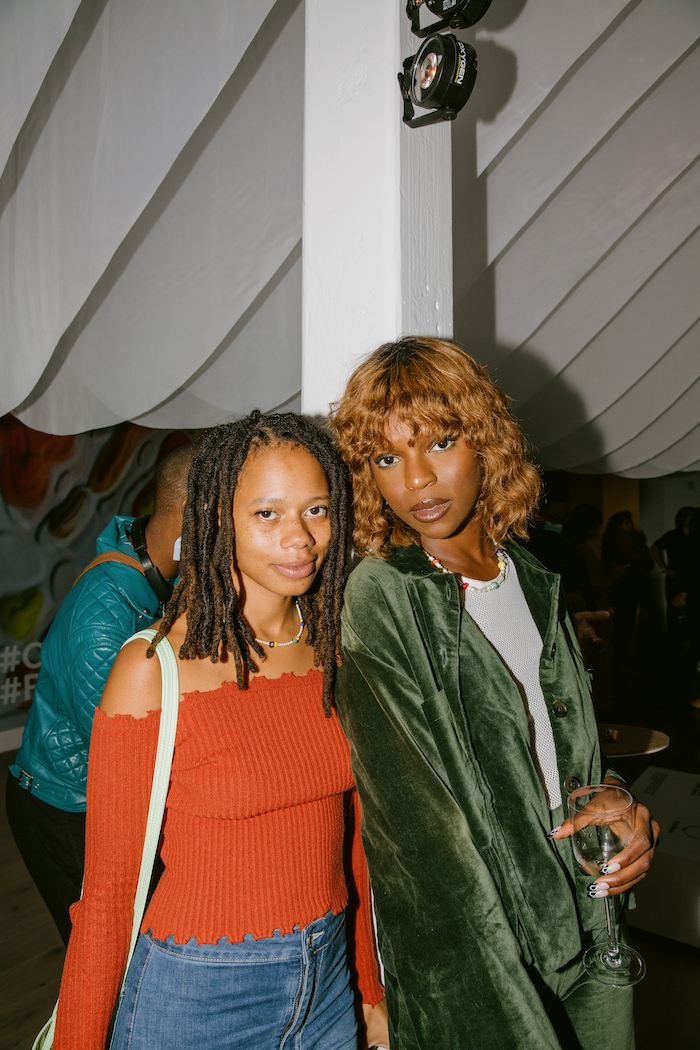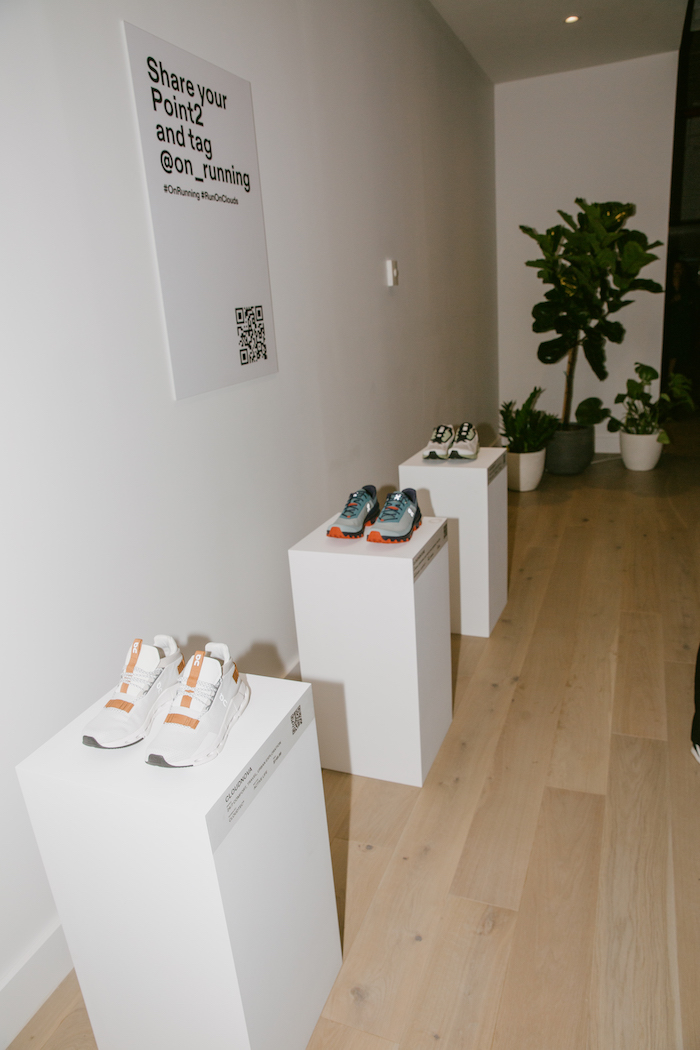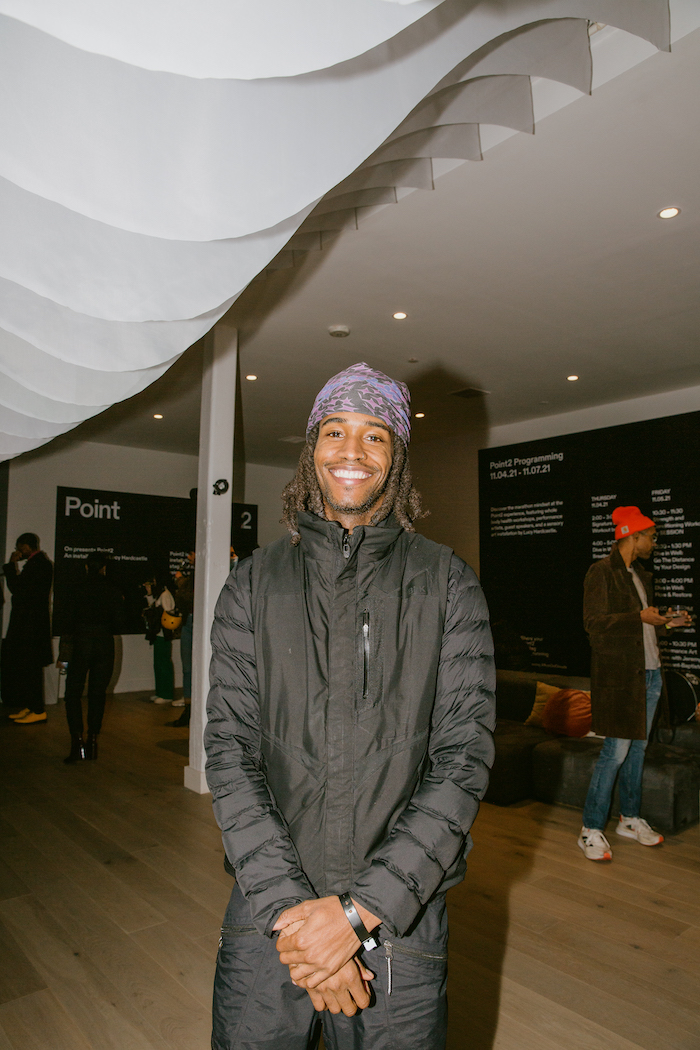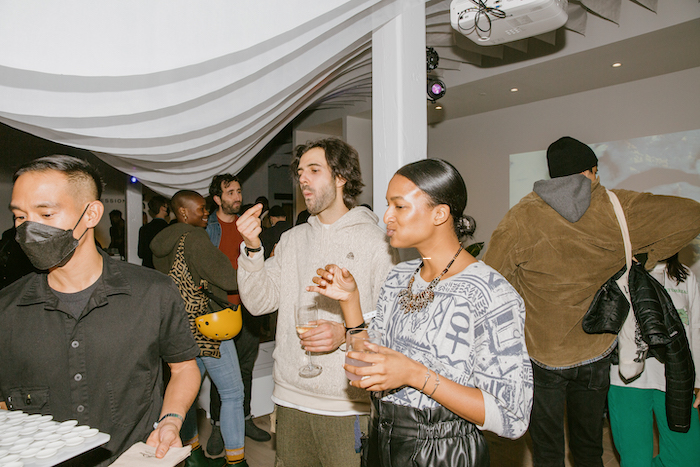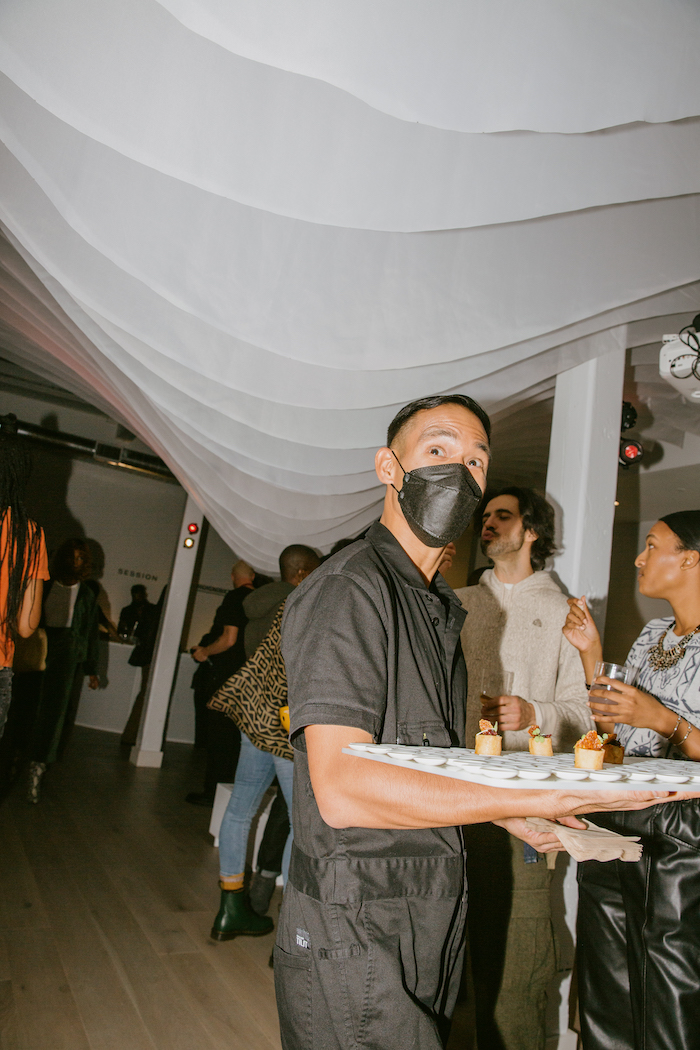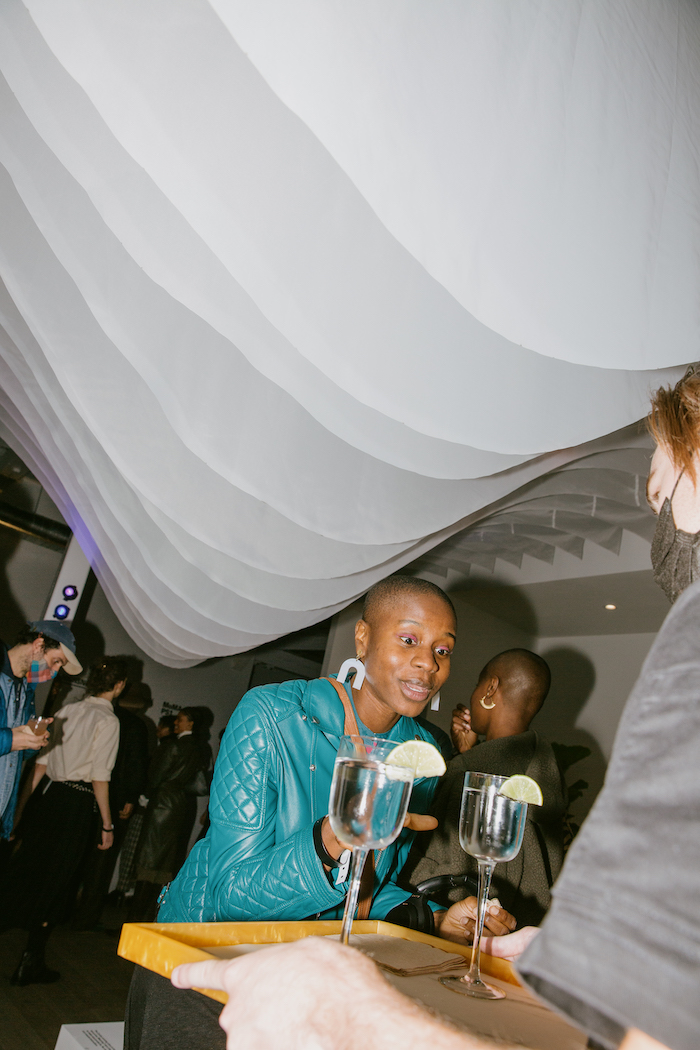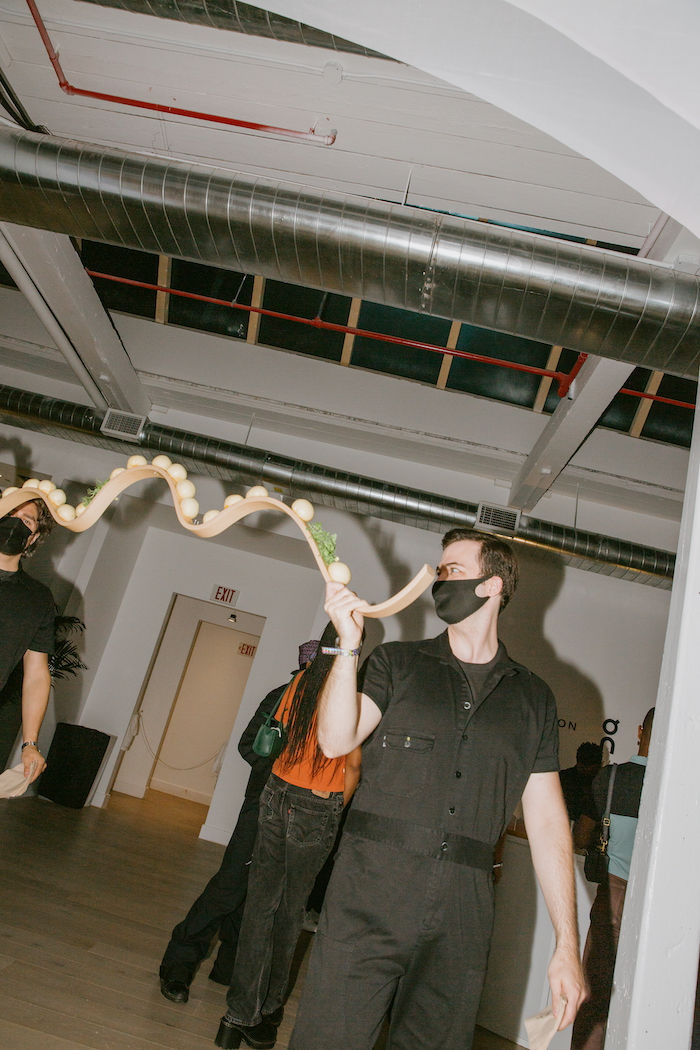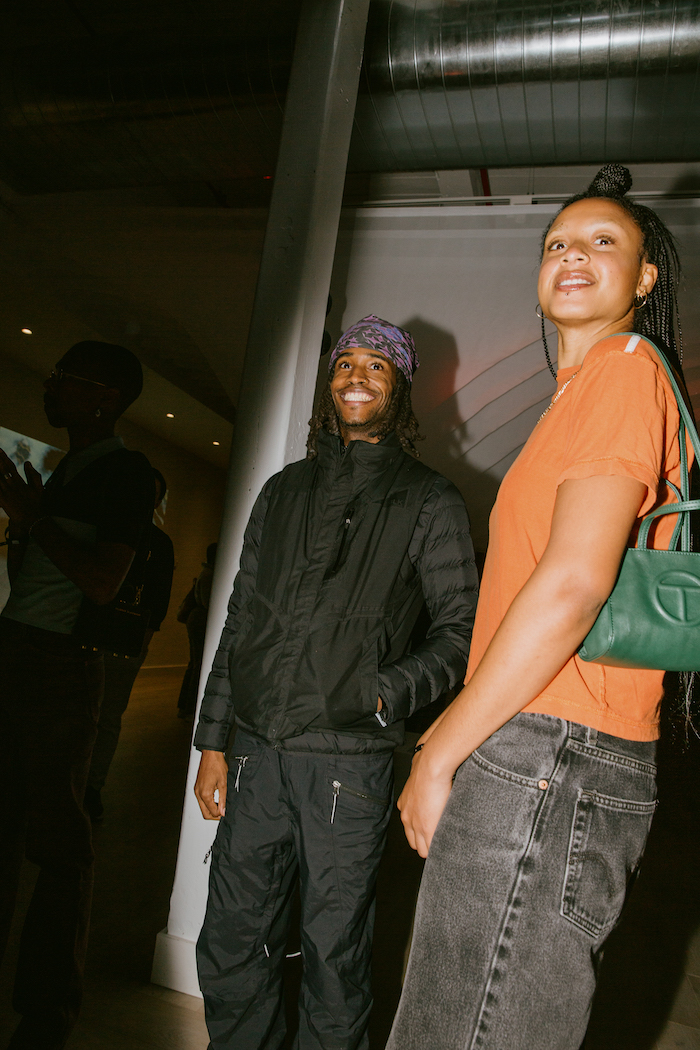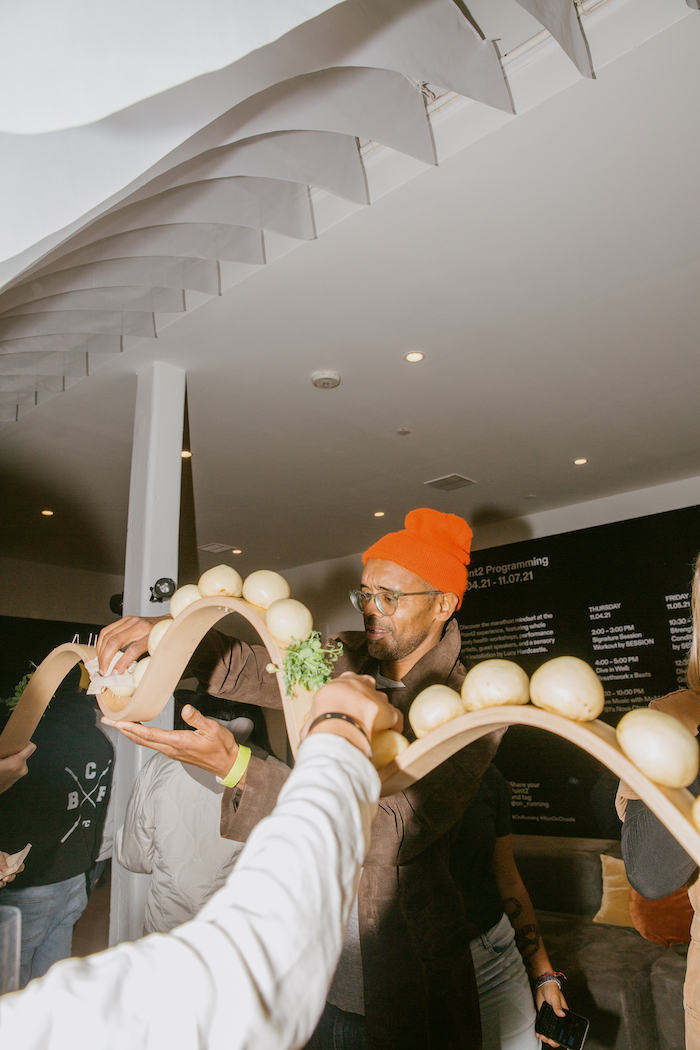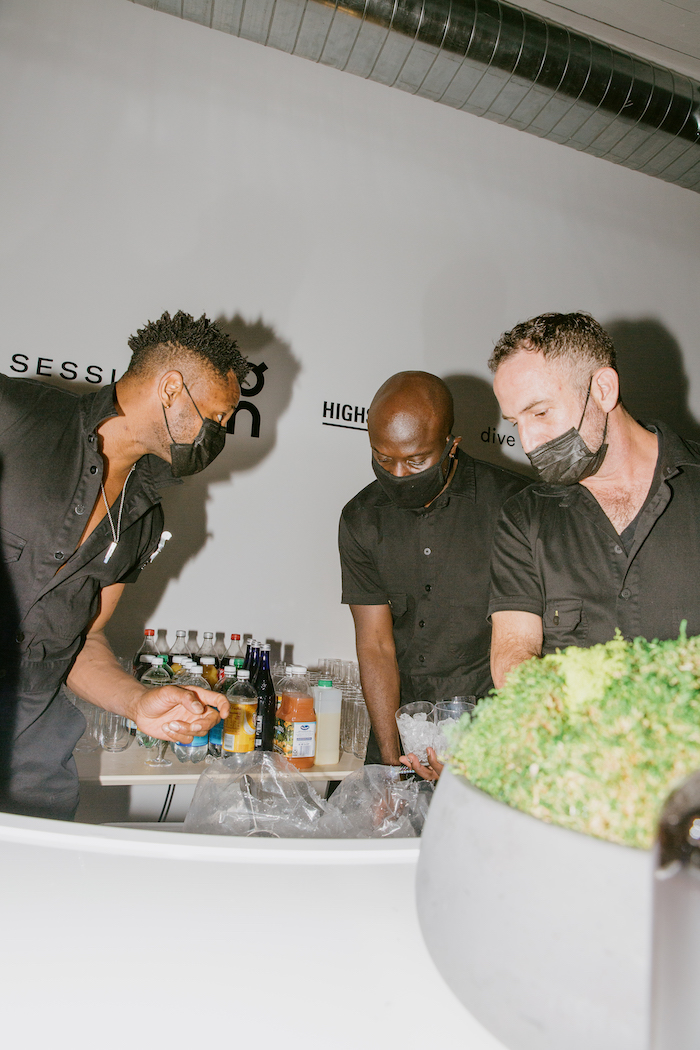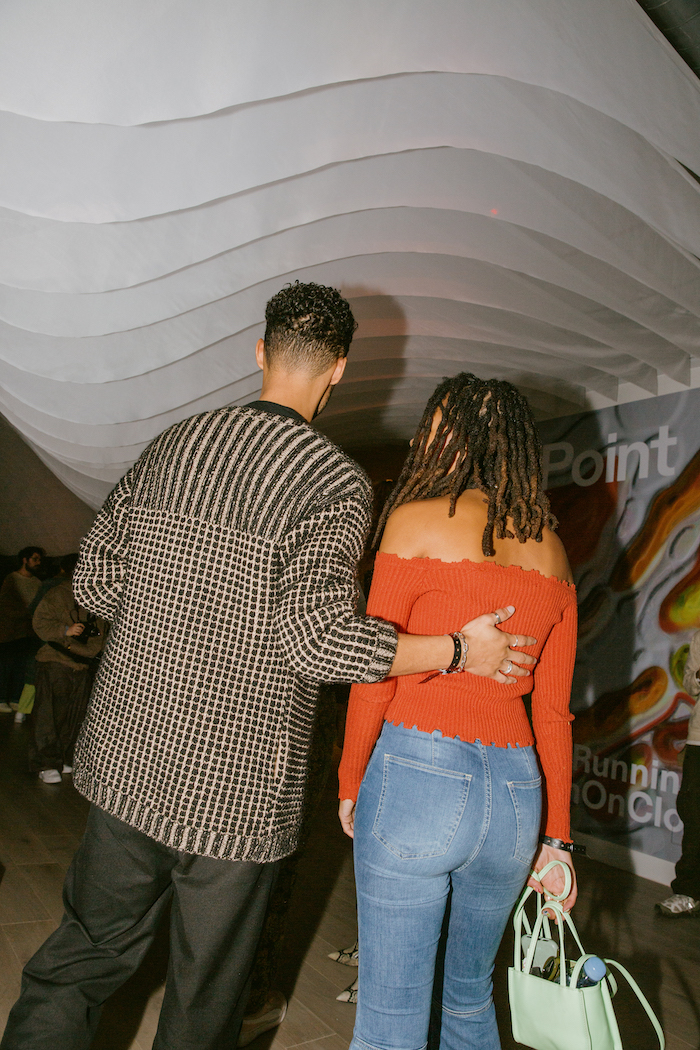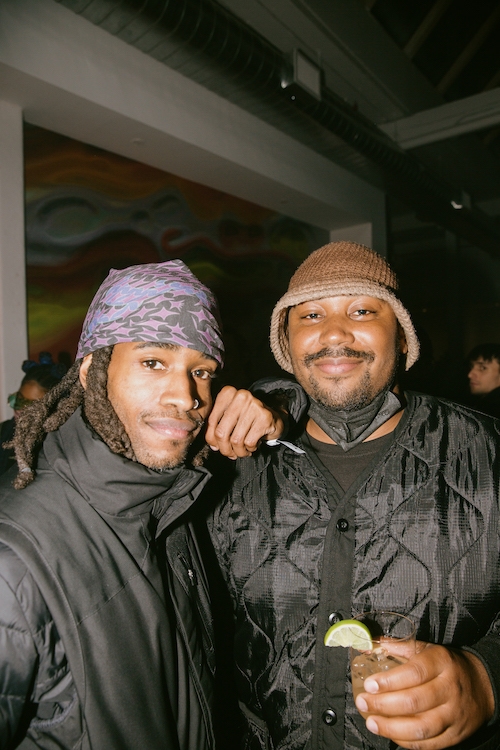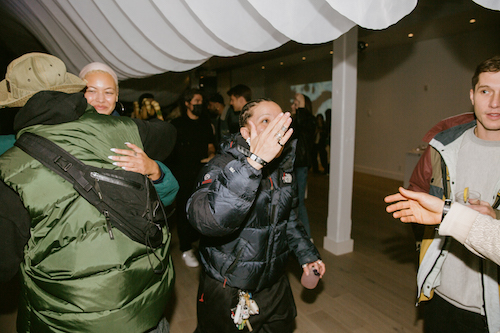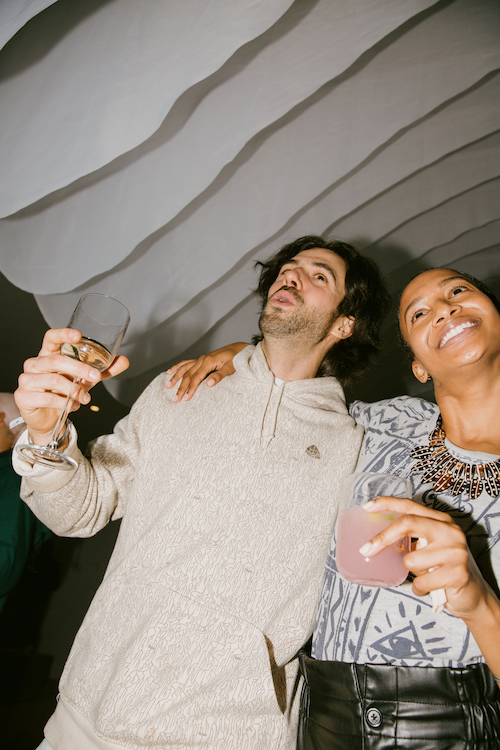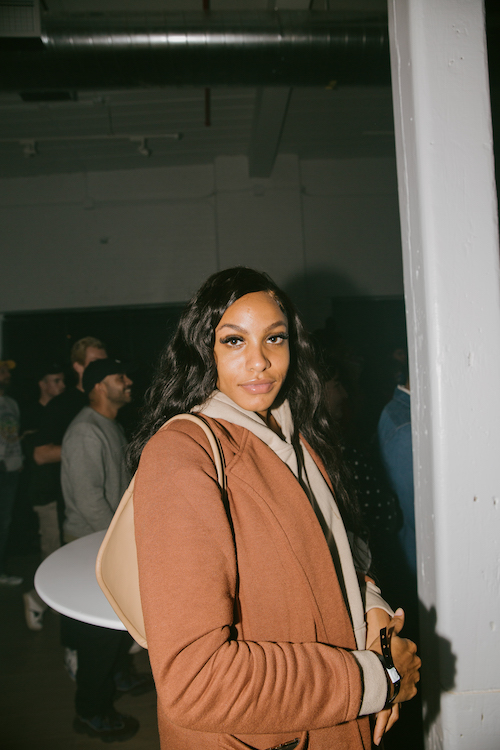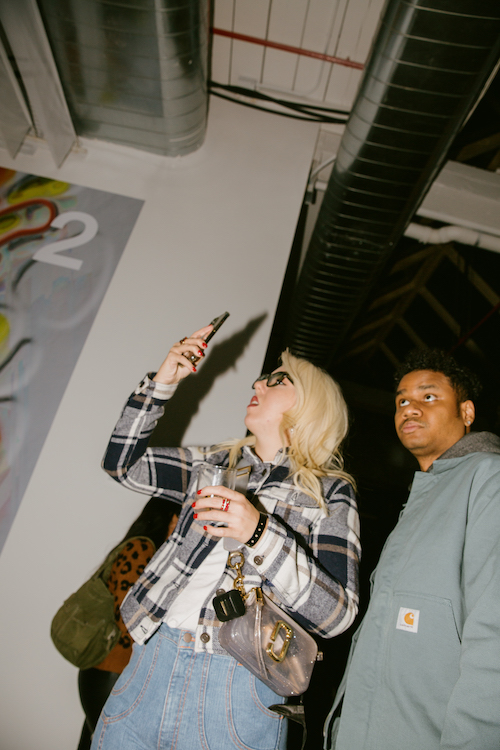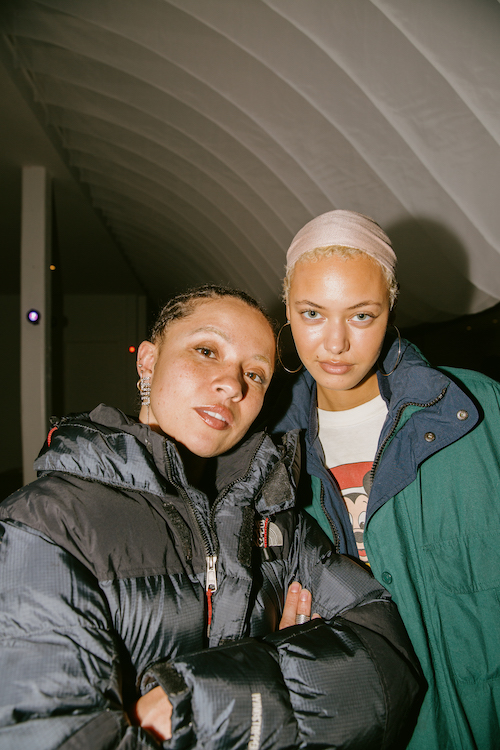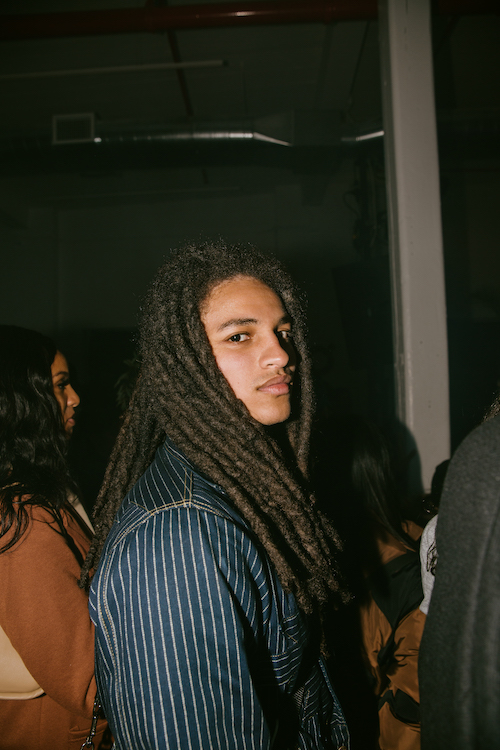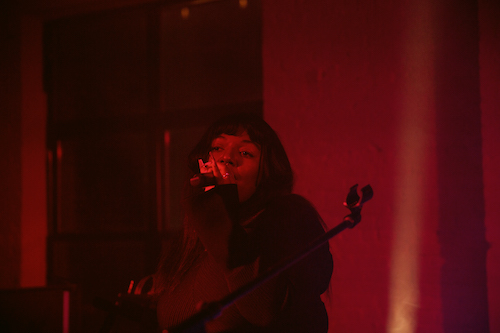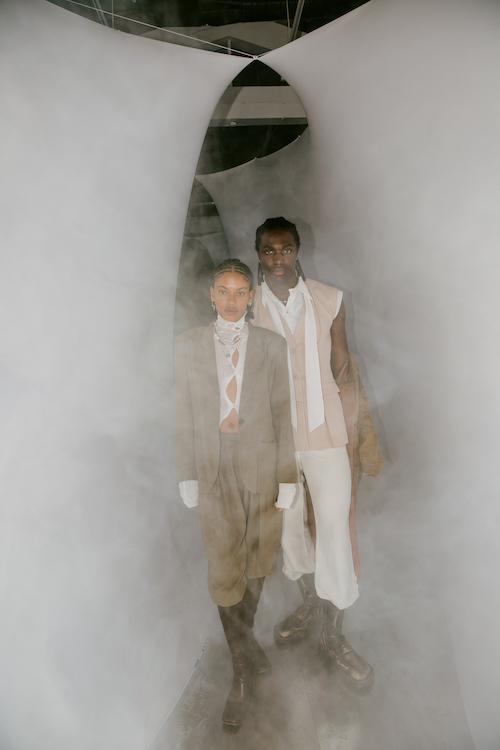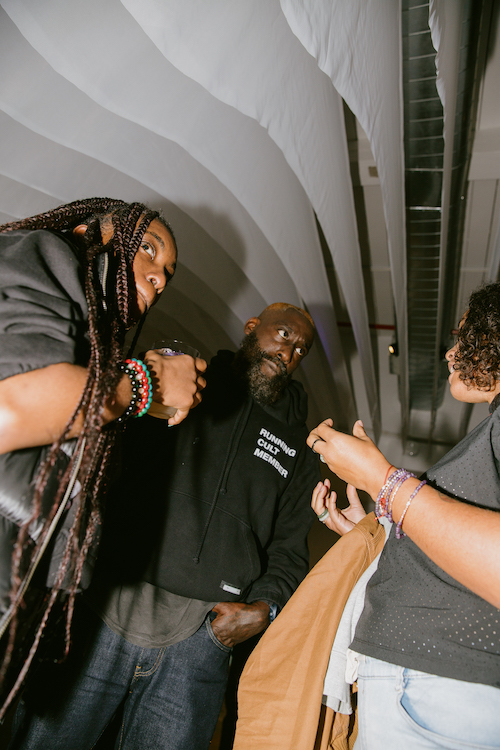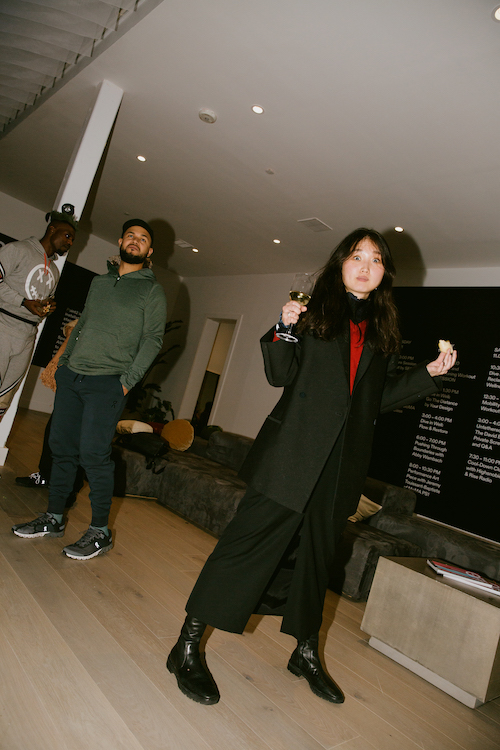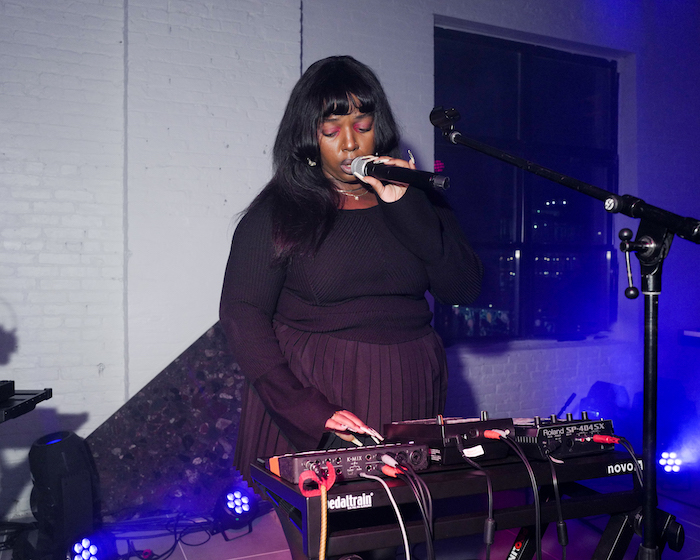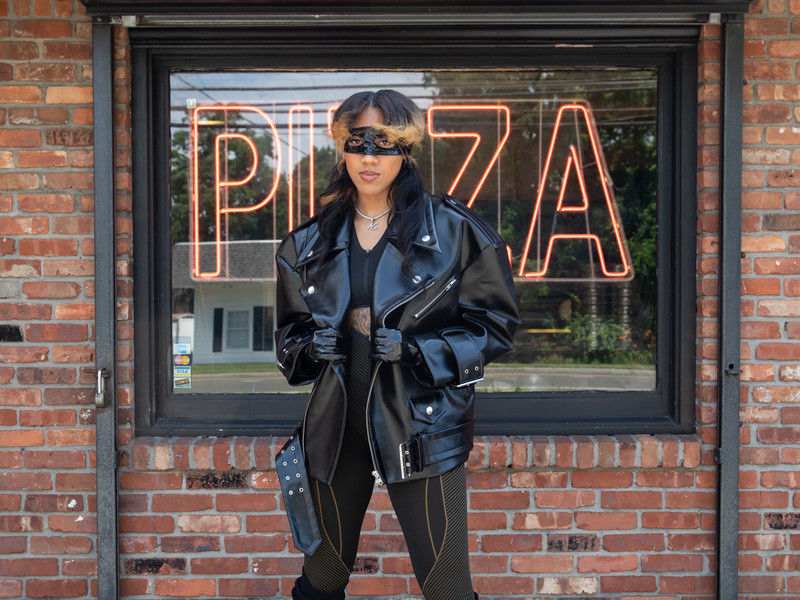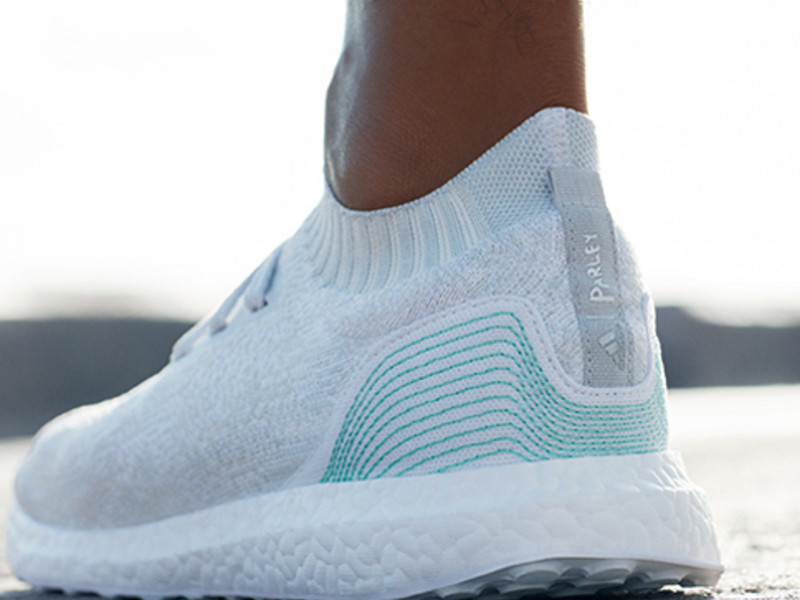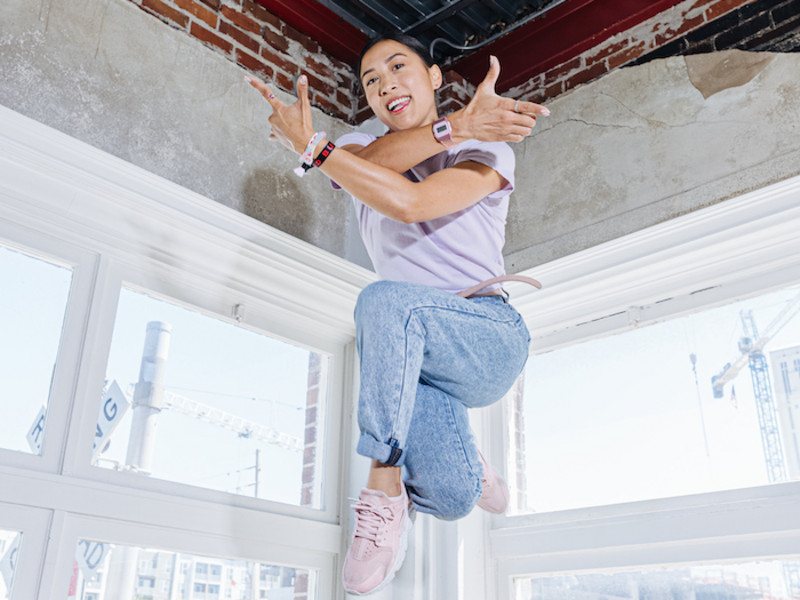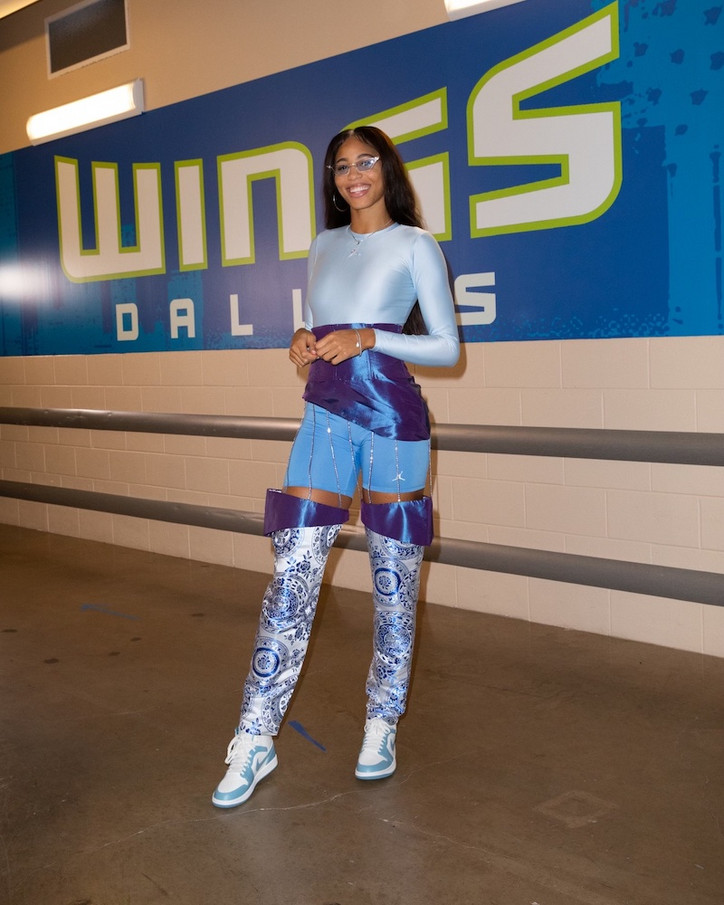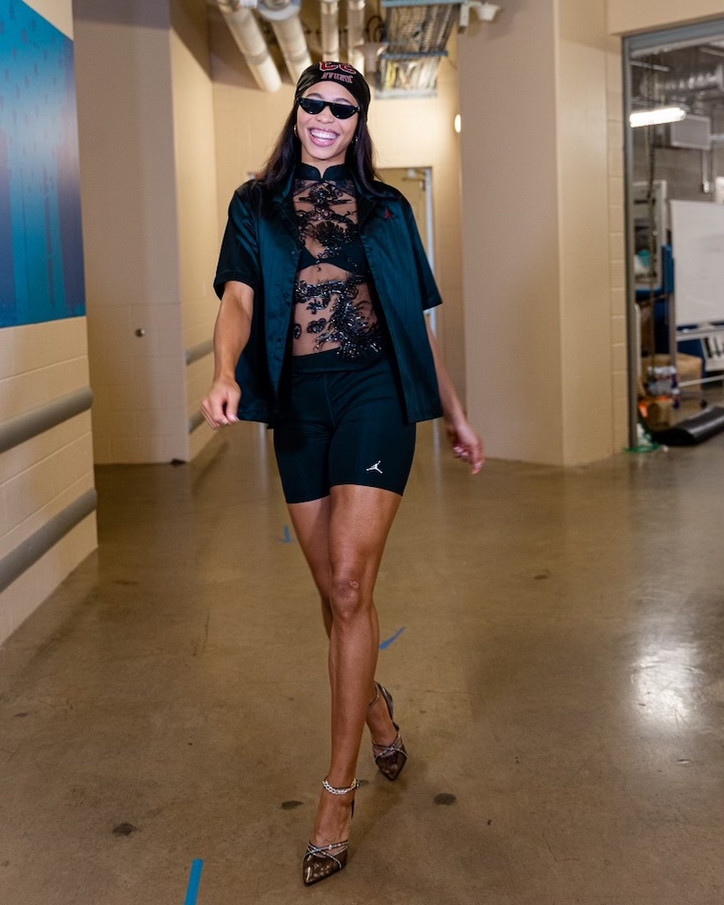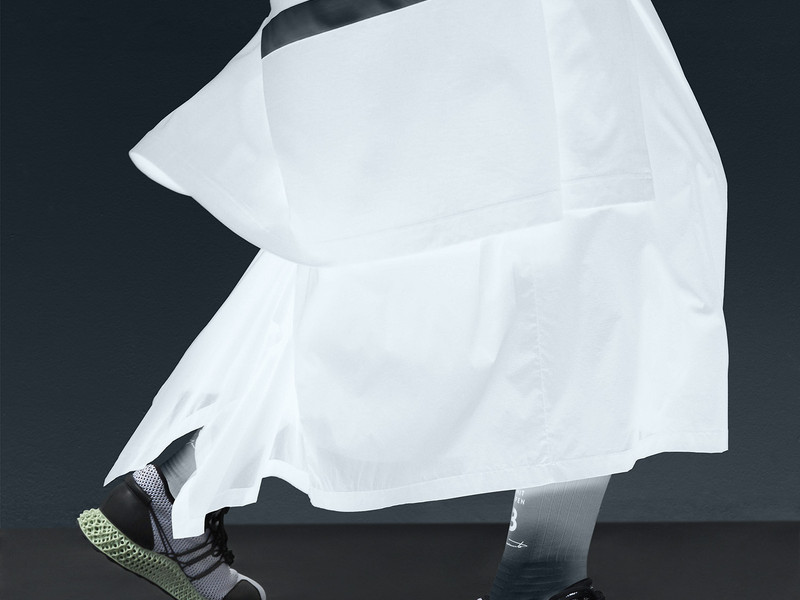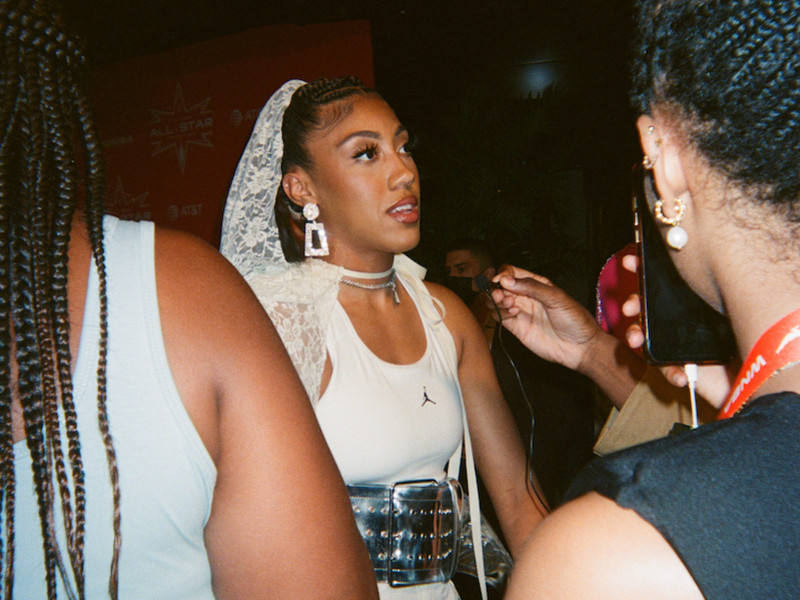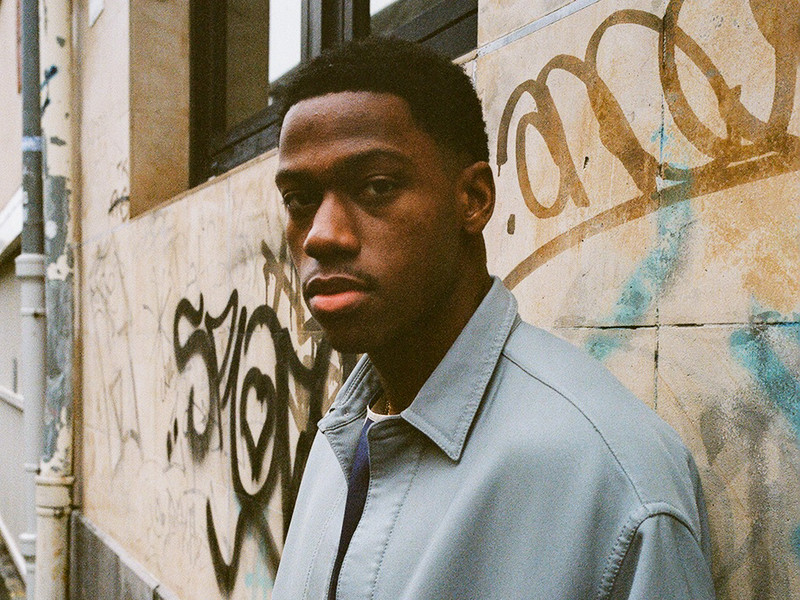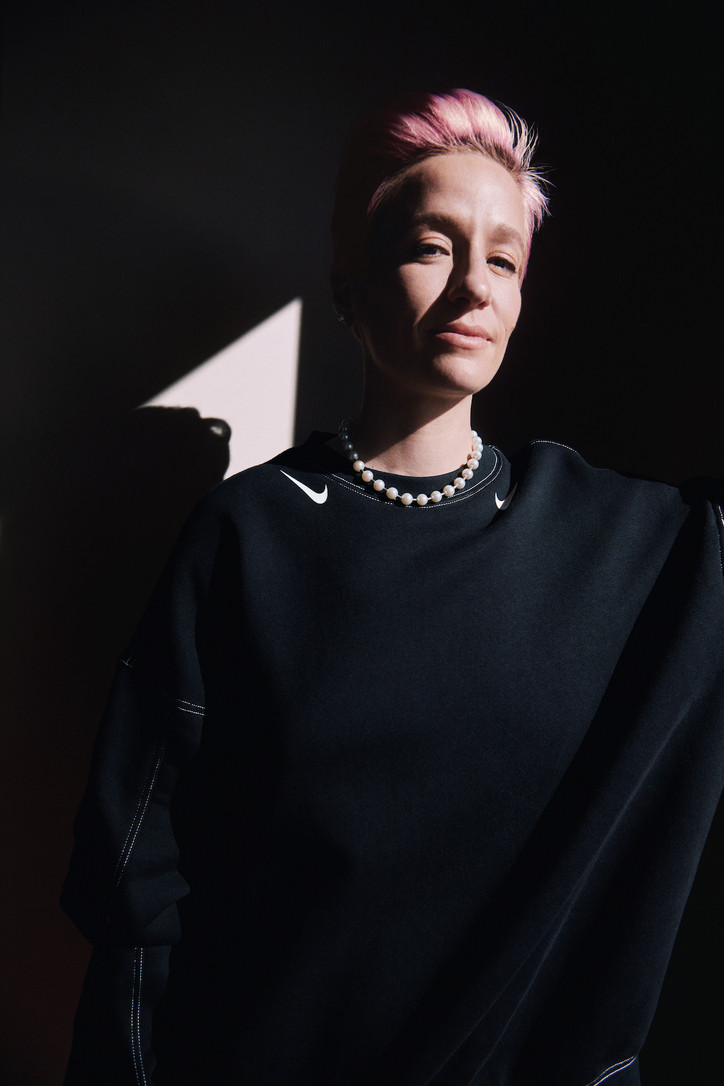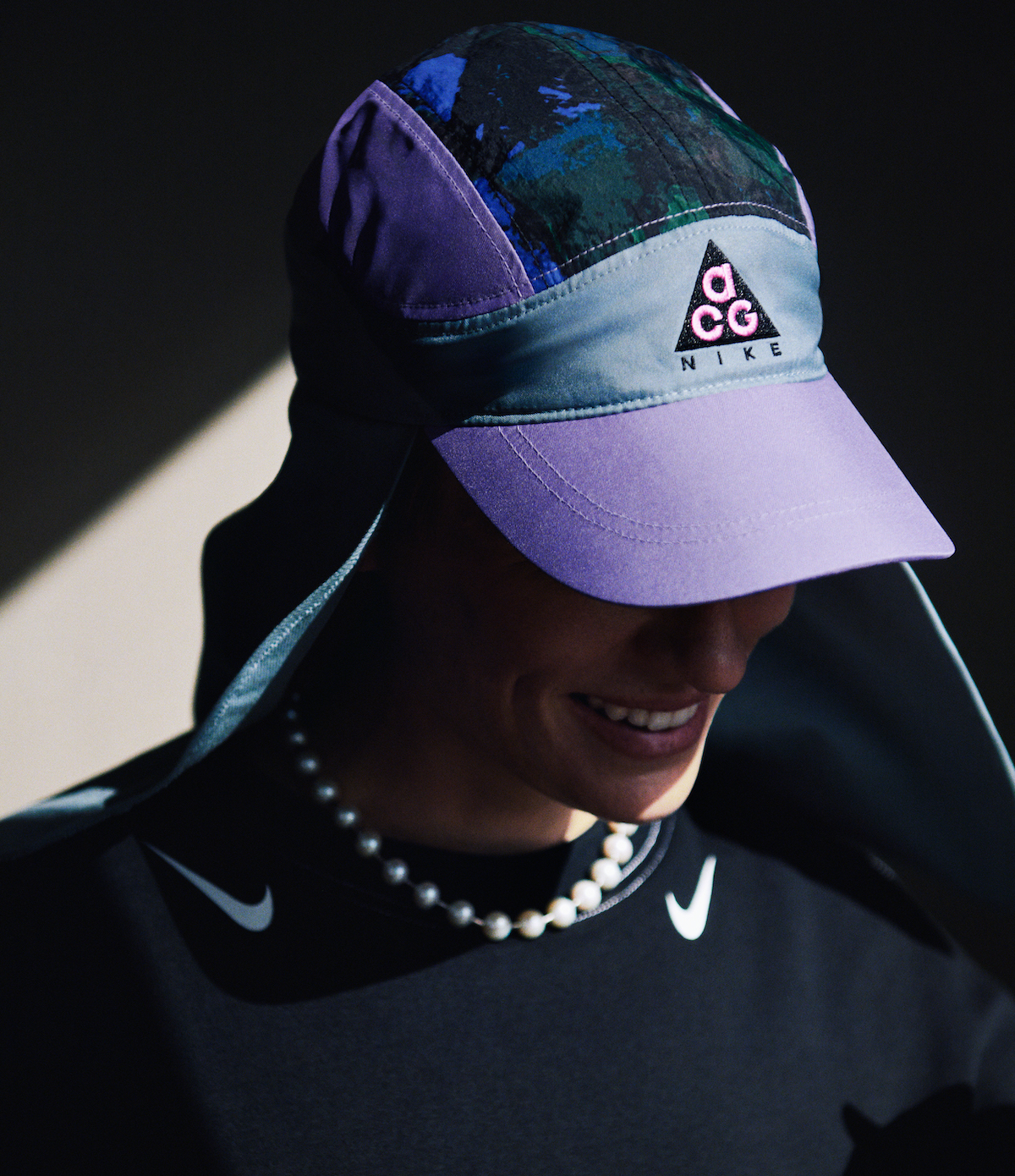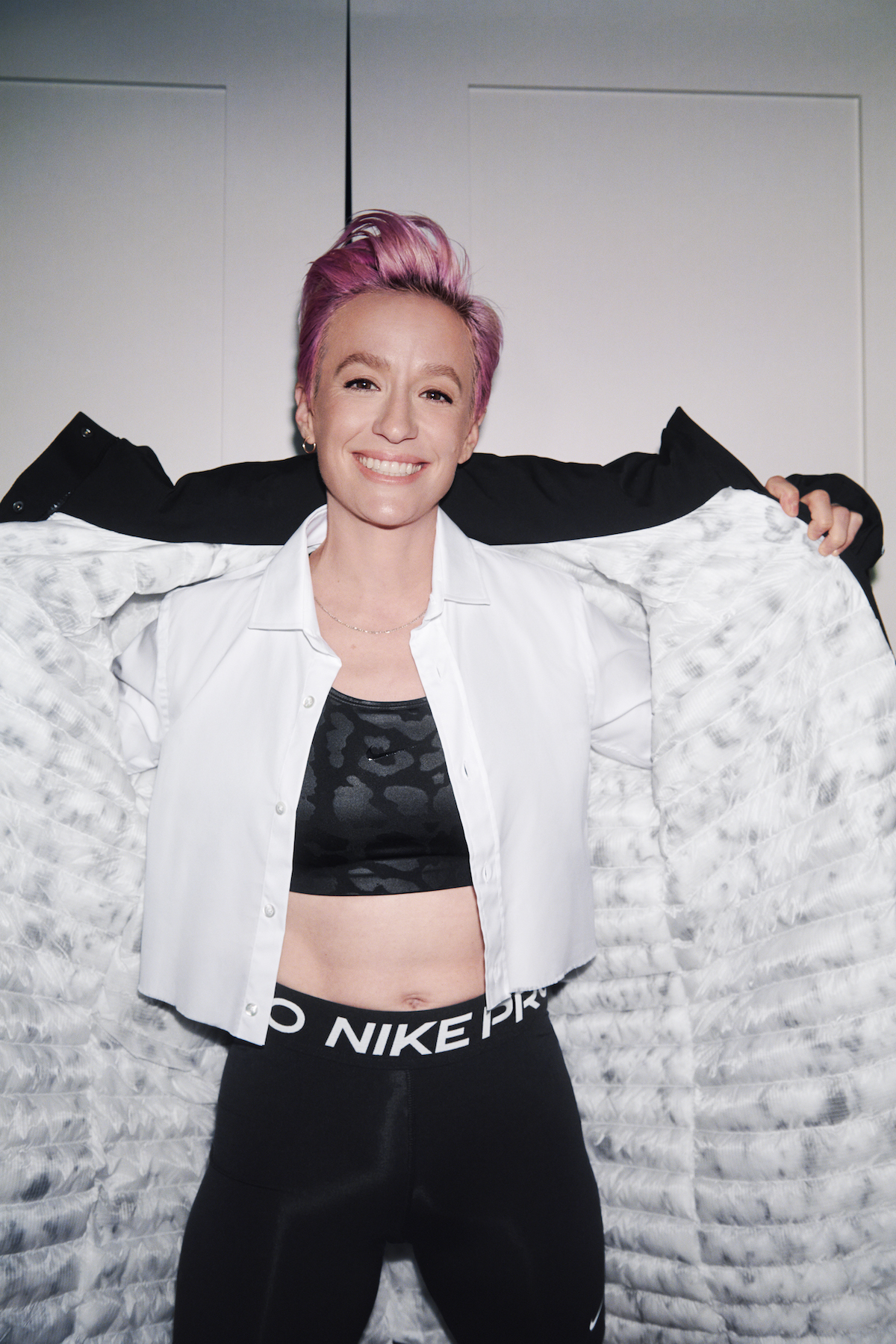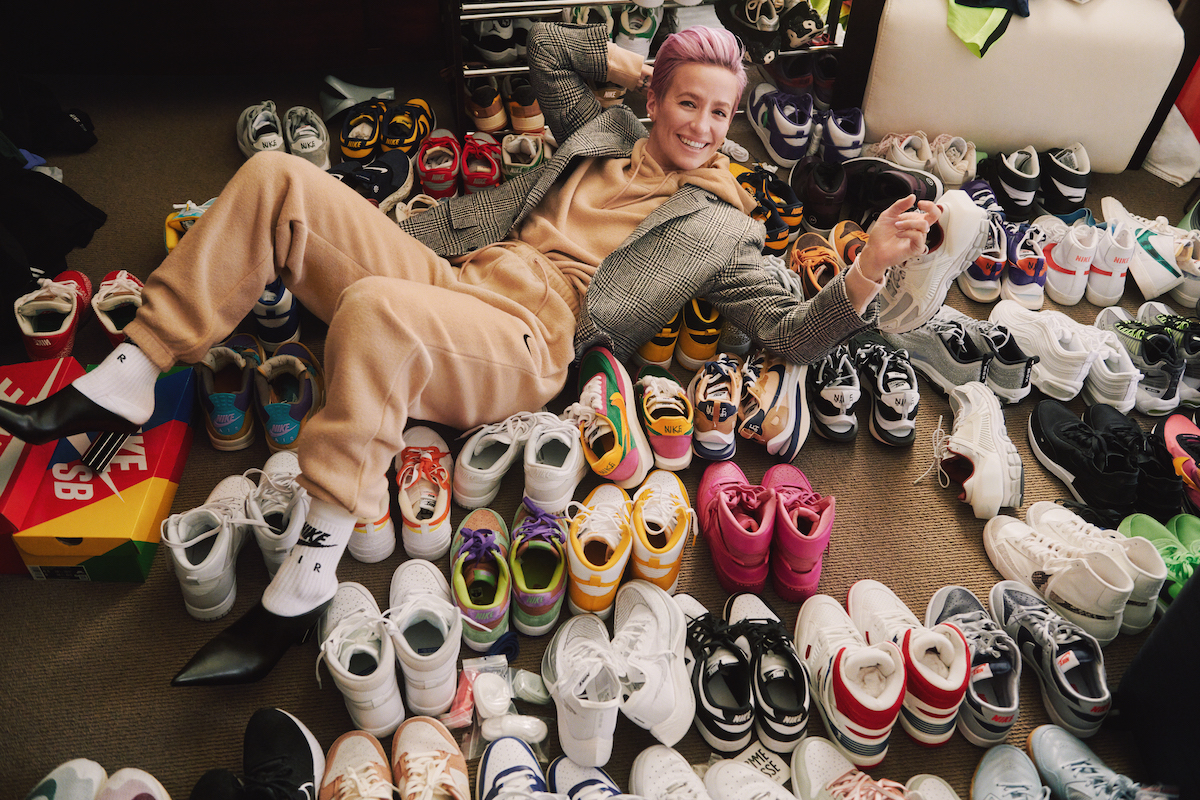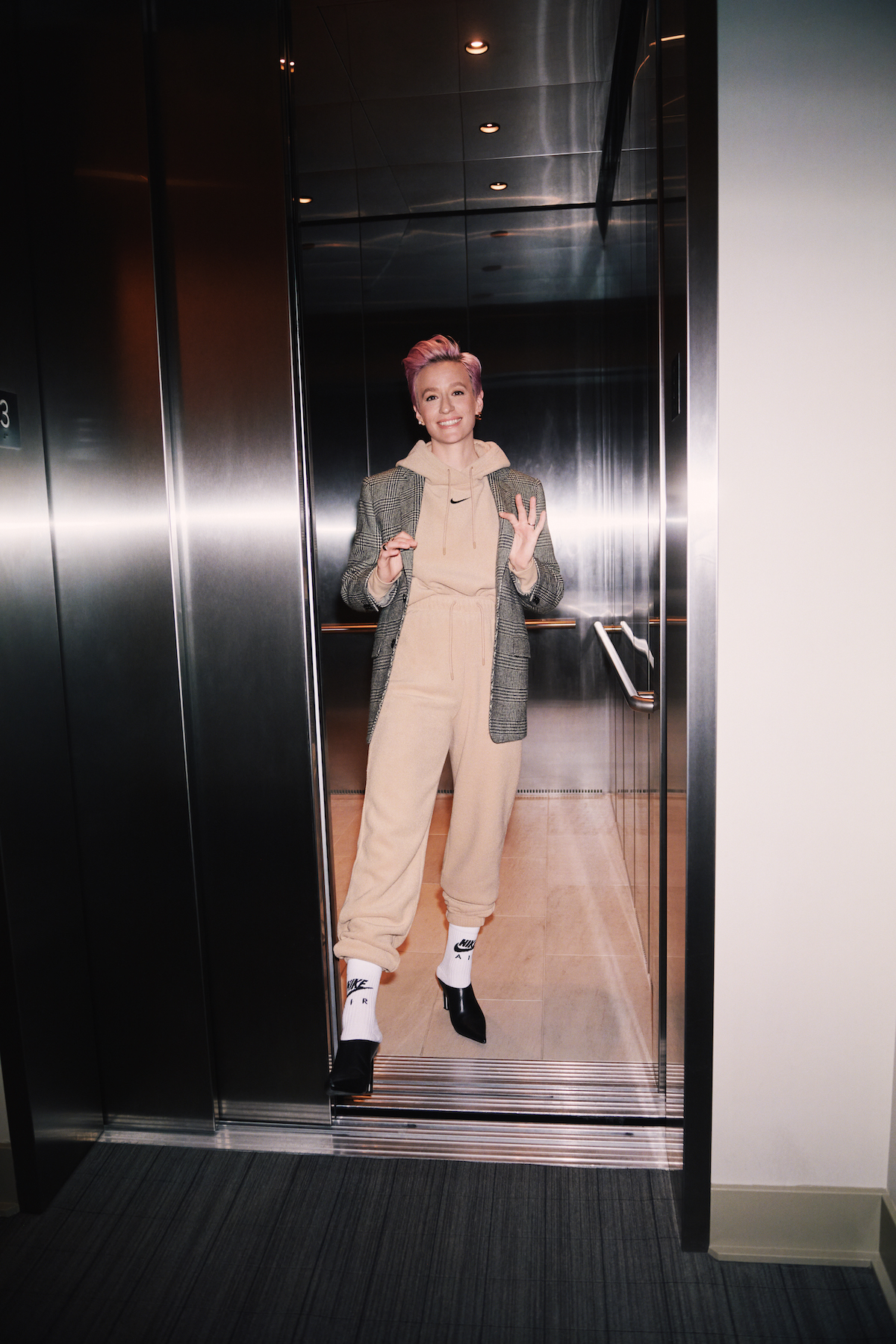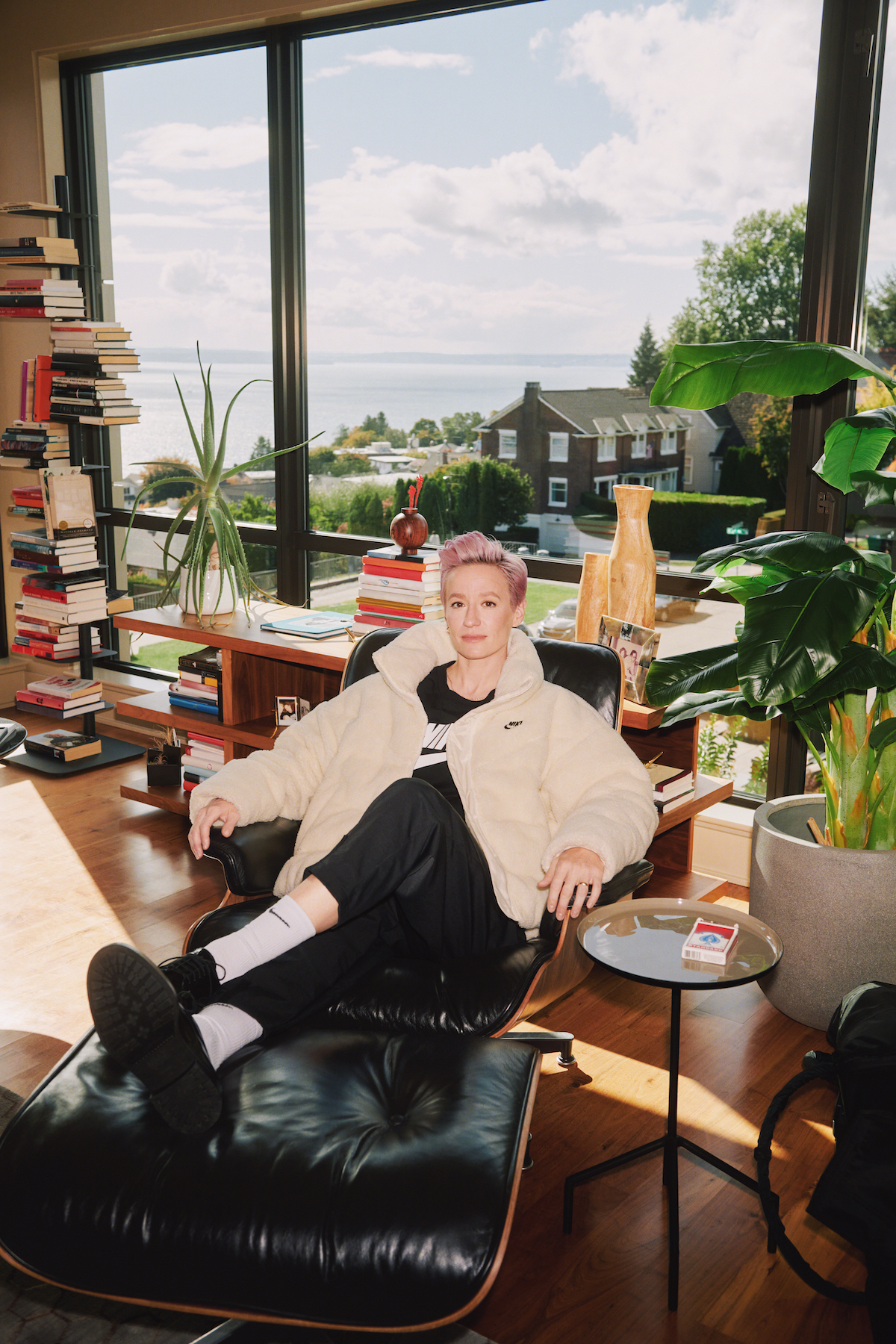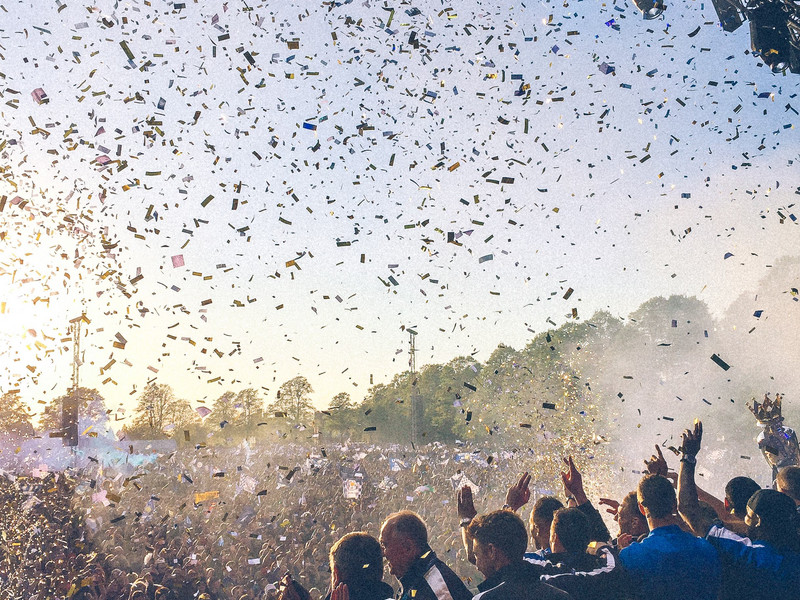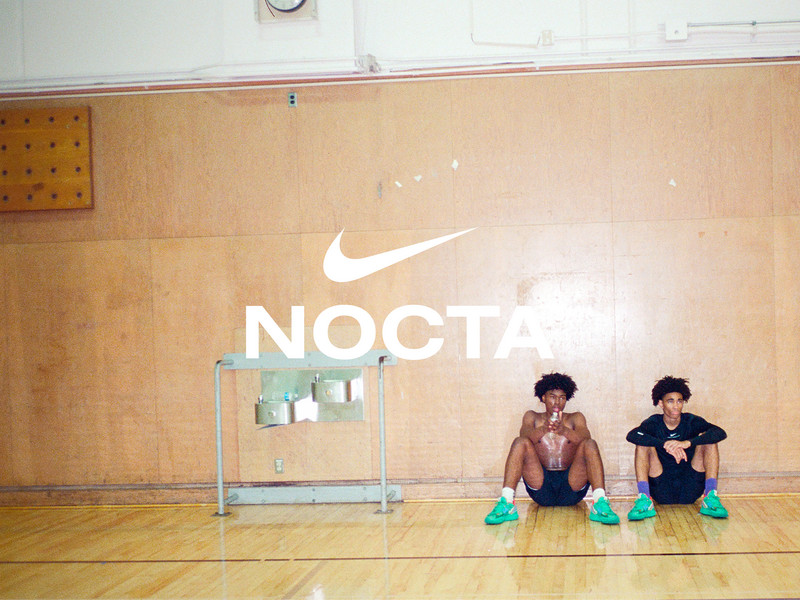What was it like having an idea come to real life, visually?
I love storytelling. I love the mix between what you're actually doing and then kind of the underneath of what you're doing. I think as a female athlete — a gay female athlete — I've found that to be really effective. Even being as out as I am, I'm not always walking into every room, like "I'm gay!"
I am!
Actually — honestly I am. But you know, even just the idea of being a 35-year old female athlete — a long-term deal of this sort of magnitude — I think says a lot and it says a lot to the changing landscape around women in sports, and culture, and what success is. It doesn't have to be 50 goals a year. It can be using the platform for good, or using your platform to speak up about things, or using style to bring a different aspect into the culture around women's sports. So I think for me, it's always fun and interesting to use a variety of mediums to get your point across. AndI think it resonates with people. I think it just hits. If you're just always saying the same thing, in the same way, in the same clothes, to the same people — it doesn't really hit in the same way. So can we pull in visuals? Can we use sport, which is easily understood by a lot of people to talk about different things? That's kind of the method to the madness.
As stated, this isn't a campaign or a product. But it's more like a re-imagination of what Nike has been for athletes and even for different audiences. Can you describe exactly what the next chapter entails, in a way that both parties can comprehend? So basically what I'm saying is can you dumb it down for everyone?
Well, I think a big thing that we're trying to do is take all of the labels off which feel restrictive. You know, just because I'm a woman doesn't mean it has to go on the Nike women's site, or just because I'm a soccer player doesn't mean it has to go on Nike soccer. I think that's the idea — the sort of redefining what it means to be just an athlete in general, but certainly a female athlete. I think we're often so restricted to certain words, or certain labels, or a certain way that we're seen in the culture. So for me, it was really interesting and fun to present myself to Nike as a designer, as a storyteller, as of course, an athlete, as someone who's fought for equality, someone who's pushed fashion in different ways -- and then having them push that back out to the world. That's the whole point -- we, as female athletes, have had to be creative and had to be entrepreneurial and had to do multiple things at one time, all the time. I always say, 'Welcome to the future. It's safe here. Everyone's gonna be okay.' We just know what the next step is, naturally, because we've already had to do that to even be successful where we are now.
And when you're speaking of making a safe space, in what ways are you opening up that door for other people where in any other project or campaign the door wasn't opened? What audience are you specifically helping out at this time?
I think a big goal in our storytelling — even from behind the camera — would be a crew that's really diverse. Who's actually directing? Who's shooting? [There is] a big focus on women of color, queer women, trans women, that are traditionally cut out of these [narratives]. So starting even from the very beginning of, 'How is this story even being thought about being told?' Much less once we get to the point where it's actually being told. I've been to so many photoshoots where you show up and everybody on the crew is a guy. Most people are white. So just kind of shaking that up and changing that perspective a little bit and then also bringing it way past me. I feel like if I'm just the center of the campaign all the time, then that just misses the entire point and defeats the whole purpose. So telling different stories and bringing different stories that don't traditionally get told to the forefront, through the platform that I have, and passing that on to other people is the biggest goal. Because I feel like we're just missing so much if I'm just telling my story. Okay, I'm a woman. I'm gay. But I come from a really conservative white area and I'm white myself and I only have my perspective. And honestly, I've told that perspective a thousand times. So how do we get the rest of the story? How do we get the most creative way to tell the story, or to get a different idea, or to get a better product. I feel like when all perspectives are heard, we're gonna get the best video or best music, or best sweatshirt, or whatever it is. So just bringing everybody in is the goal and bringing it much past just one person.

